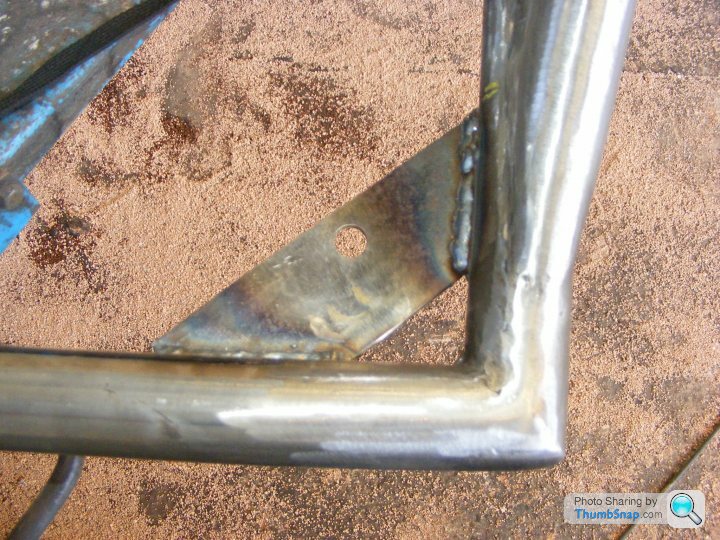Outrigger Corners - Filling The Void
Discussion
First of all this post is just to discuss an idea, I'm on the fence at this stage so all sensible opinions are welcomed.
I've been considering where the rot starts in the outriggers and why, and it seems abundantly clear from all the body lift chassis restoration photos I've seen and more recently those of my own that the issue always starts in the four outer corners.
To bring this to life here are mine
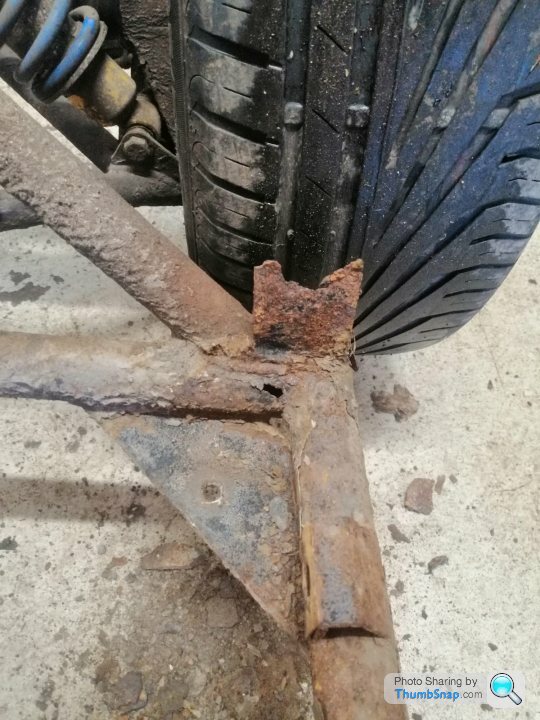

The reason for this is the corner strengthening fillets act as platforms holding the damp road dirt thrown up by the wheels, this muck sits as a moist mass against the steel outriggers and trapped right in the the outrigger corners so making for the perfect recipe to promote corrosion. Moreover with the body sat over the top what you end up with is a neat void, and that void is the perfect mud trap!
Modern cars solve the mud trap issue using wheel arch liners, I'll be doing the something similar with my Chimaera by fitting outrigger protectors before it even turns a wheel after it's chassis renovation, however what if those mud traps could be completely eliminated in the first place, the idea being to fill the voids with a suitable compound?
The best option seems to be Shell Tixophalte Wet Seal & Fix which is a is a ready-to-use rust inhibiting bituminous compound that can be applied cold as a filler, formulated from carefully selected components based on rubber-modified bitumen it never actually sets like a silicone or polyurethane sealant. This product is easy to apply and using a caulking gun so can be forced into the outrigger corners ensuring the voids are completely filled, Shell Tixophalte is designed to offer long-lasting protection and waterproofing.
Formulated for high resistance to movement, weathering, chemicals and other environmental factors its hydrophobic state is so good it can even be applied underwater, in the next two videos we can see it's amazing water chasing properties.
https://www.youtube.com/watch?v=83hgAefT85E&fe...
https://www.youtube.com/watch?v=hZCN8EUR6Vc
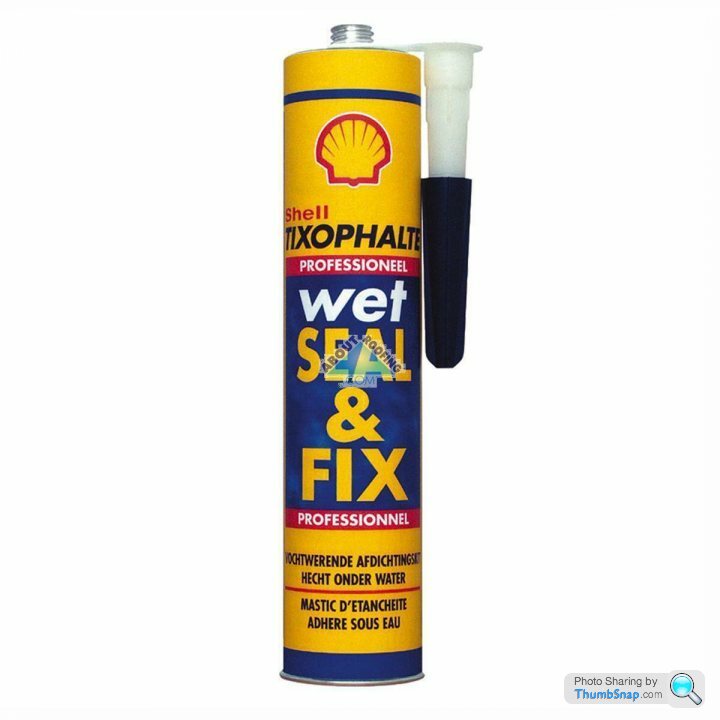
So what do people think about the idea of eliminating these known mud traps and the primary points of corrosion by filling the voids with Shell Tixophalte?
I've been considering where the rot starts in the outriggers and why, and it seems abundantly clear from all the body lift chassis restoration photos I've seen and more recently those of my own that the issue always starts in the four outer corners.
To bring this to life here are mine


The reason for this is the corner strengthening fillets act as platforms holding the damp road dirt thrown up by the wheels, this muck sits as a moist mass against the steel outriggers and trapped right in the the outrigger corners so making for the perfect recipe to promote corrosion. Moreover with the body sat over the top what you end up with is a neat void, and that void is the perfect mud trap!
Modern cars solve the mud trap issue using wheel arch liners, I'll be doing the something similar with my Chimaera by fitting outrigger protectors before it even turns a wheel after it's chassis renovation, however what if those mud traps could be completely eliminated in the first place, the idea being to fill the voids with a suitable compound?
The best option seems to be Shell Tixophalte Wet Seal & Fix which is a is a ready-to-use rust inhibiting bituminous compound that can be applied cold as a filler, formulated from carefully selected components based on rubber-modified bitumen it never actually sets like a silicone or polyurethane sealant. This product is easy to apply and using a caulking gun so can be forced into the outrigger corners ensuring the voids are completely filled, Shell Tixophalte is designed to offer long-lasting protection and waterproofing.
Formulated for high resistance to movement, weathering, chemicals and other environmental factors its hydrophobic state is so good it can even be applied underwater, in the next two videos we can see it's amazing water chasing properties.
https://www.youtube.com/watch?v=83hgAefT85E&fe...
https://www.youtube.com/watch?v=hZCN8EUR6Vc

So what do people think about the idea of eliminating these known mud traps and the primary points of corrosion by filling the voids with Shell Tixophalte?
Belle427 said:
I tend to agree it's better to see what's happening to the metal and not encapsulate anything so to speak.
Everyone has different opinions.
Fair points from Ray Von and Belle427, and they're really why I'm undecided.Everyone has different opinions.
I've been studying the pros and cons of various ideas as I consider my options while the body is still off, initially and despite the excellent performance I've enjoyed from the Dinitro 3125 wax and 4941 underseal rustproofing (applied way back in January 2011) I'd decided I wasn't going with it again, mainly because I'm sick of getting covered in the stuff.
However I guess the outrigger corners and tops half radius of the main outrigger tubes could be treated with the same two stage Dinitrol system for additional protection against this sort of thing

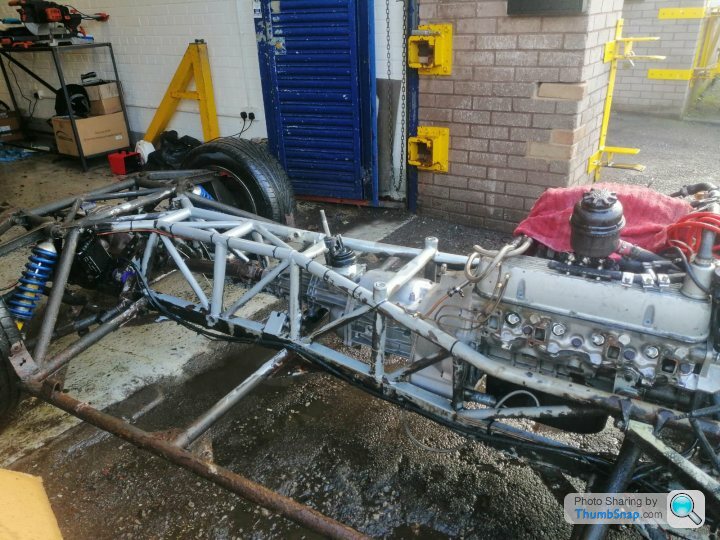
As these areas are hidden, in theory I shouldn't get coated in the stuff when I work on the car

Or maybe I should just save my money on rust proofing products, leave the voids un-filled with goop and just rely on the outrigger protectors and the Jotamastic 90 epoxy mastic 2k paint system?
However if I do go with the no goop option I would like flushing holes drilled in my new corner fillets, as the name suggests these holes would alow me to flush out any salt or road debris that may still end up sat trapped on these very effective muck platforms.
And using a suitable hose attachment the flushing could be made much more convenient

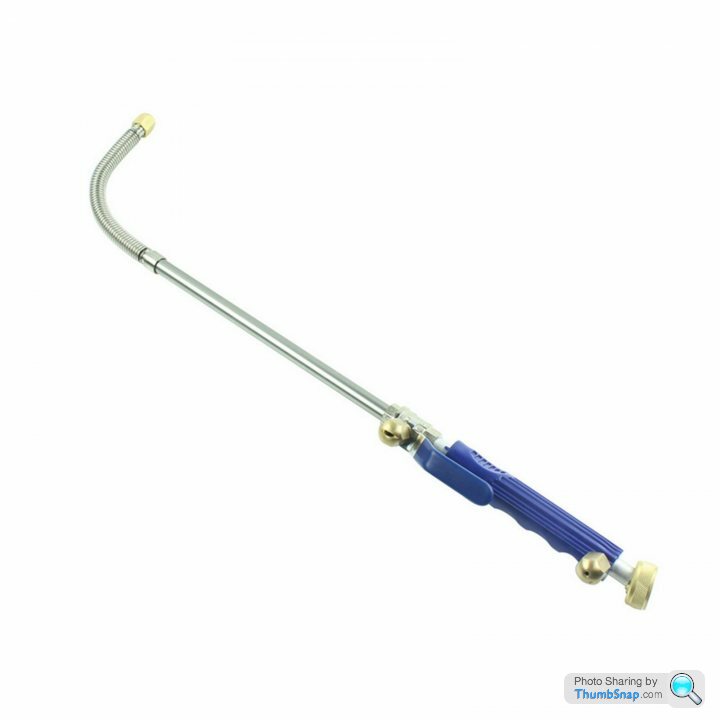
As I swing back to the no rustproofing or void filling goop idea keeping everything clear with a regular blast of fresh water does seem the best option, the above hose attachment makes this possible without jacking the car and is ideal for running along the outriggers and getting into the suggested flushing holes. But I will need those flushing holes adding before the body goes back on, and they will need painting or the fresh bare steel edges of the newly drilled holes will start to rust in no time.
I'll discuss the flushing holes idea with Alex Wheatly next week, but before this I'm interested in what others think about all this, so your additional comments are welcomed.
sapper said:
When I replaced my outriggers I used ether that or something similar. Sorry but can’t remember the exact product.
I gave the outriggers a few coats of zinc paint then before I lowered the body back on to the chassis, I filled all the corners and the cross beams with this.
Then put a lot of extra on top so when I lowered the chassis it squeezed out the excess.
8 years since and still working well.
Interesting sapper, that's the exactly the idea I'm considering I gave the outriggers a few coats of zinc paint then before I lowered the body back on to the chassis, I filled all the corners and the cross beams with this.
Then put a lot of extra on top so when I lowered the chassis it squeezed out the excess.
8 years since and still working well.

Edited by ChimpOnGas on Sunday 16th February 12:44
Belle427 said:
I think rust proofing products have come a long way since the days of waxoyl, dinitrol seem to have some of the best around.
Agreed, the Dinitrol 3125 wax and 4941 underseal two stage rustproofing system applied by 'Chassis Clean' back in January 2011 definitely delayed the need for new outriggers for many years, and it certainly held back the existing corrosion around the welds while I built up my chassis renovation war chest for the body lift that's essential to achieve proper de-rusting and painting.The Dinitrol treatment wasn't cheap at the time, but in the end over the 9 years it worked out at just £40 a year so I'd now consider it excellent value for money, but these days I'm drawn to the nice clean chassis experience so I'm favoring purely relying on outrigger protectors and the very tough industrial marine grade epoxy mastic paint from Jotun.
But do we fill the corners and cover the tops of the tubes with something as sapper did before Alex drops the body back on, or do I go with the 'No Goop' option and stick with regular fresh water flushing

There are pros and cons for each approach so I still remain undecided

Ok chaps, thanks for entering into the discussion, I'm now set on what I'm calling the 'No-Goop' option 
I've decided while voids of any kind are not ideal is better to have clear voids I can flush out with fresh water than voids filled with something, even if that something is a rustproofing bitumen based compound as it's always possible it may shrink and create new voids of its own that could potentially trap water/debris.
The system will be....
1. A good 2k epoxy mastic paint
2. Outrigger protectors to keep the muck out and stop stone chipping of the normally exposed outrigger tubes
3. Flushing holes drilled in the corner fillets
4. Regular fresh water flushing with a suitable hose attachment
The first two elements offer a massive improvement in protection over what the car got from new which by itself delivered 23 years of serviceable outrigger life, the way I see it with the far superior protection offered by a better paint system and outrigger protectors combined with regular fresh water flushing should deliver a lot more than 23 years.
Thanks for your input everyone
Dave.

I've decided while voids of any kind are not ideal is better to have clear voids I can flush out with fresh water than voids filled with something, even if that something is a rustproofing bitumen based compound as it's always possible it may shrink and create new voids of its own that could potentially trap water/debris.
The system will be....
1. A good 2k epoxy mastic paint
2. Outrigger protectors to keep the muck out and stop stone chipping of the normally exposed outrigger tubes
3. Flushing holes drilled in the corner fillets
4. Regular fresh water flushing with a suitable hose attachment
The first two elements offer a massive improvement in protection over what the car got from new which by itself delivered 23 years of serviceable outrigger life, the way I see it with the far superior protection offered by a better paint system and outrigger protectors combined with regular fresh water flushing should deliver a lot more than 23 years.
Thanks for your input everyone

Dave.
spikep said:
^^I've always liked the open corner fillet arrangement^^Its still a platform that can hold road muck but its no going to hold it in the corner, and flushing with fresh water is far easier than with a fillet that creates a closed corner. I had intended to discuss the open corner idea with Alex but there are only so many things I can remember, and I'm sure I can become annoying with all my little requests.
Anyway I'm now thinking with the right hose attachment aimed correctly and running sufficient hose pressure there really shouldn't even be a need for my flushing holes idea, the best option is the leave my new painted fillets as they are and after all its getting these outrigger protectors too so I very much doubt there will be much if any road debris collecting in the corners anyway.
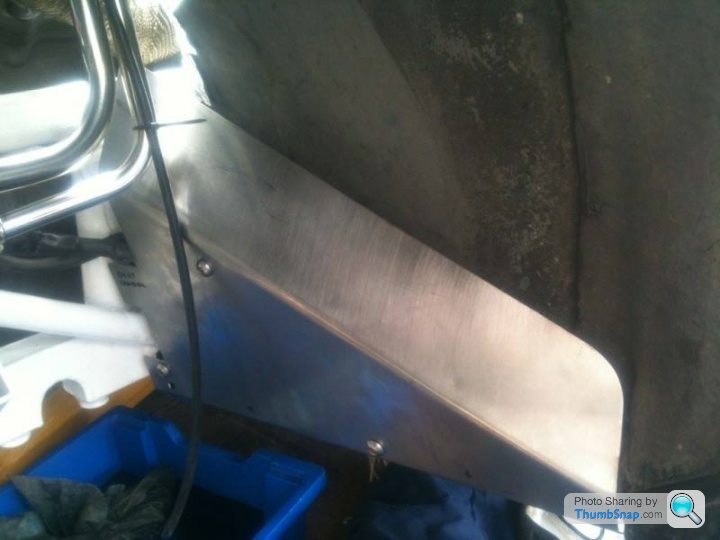
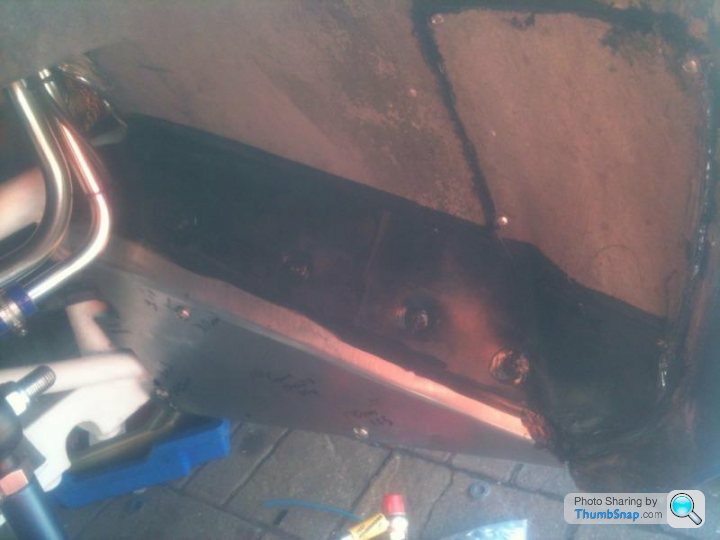
Edited by ChimpOnGas on Tuesday 18th February 07:29
Just found these rather neatly fabricated outrigger protectors made by bluezeeland from low density PVC.
https://www.pistonheads.com/gassing/topic.asp?h=0&...
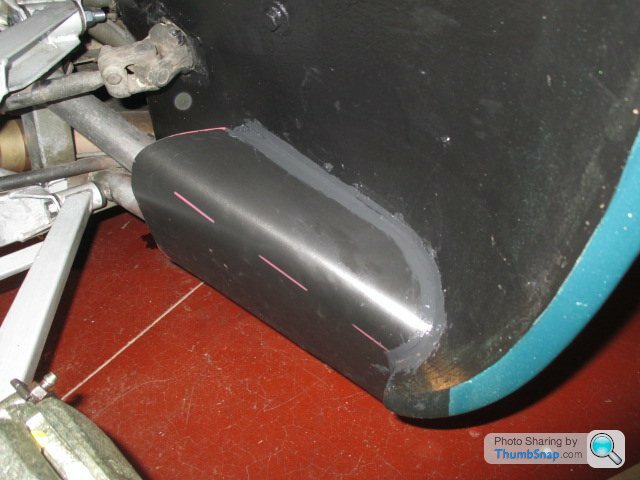
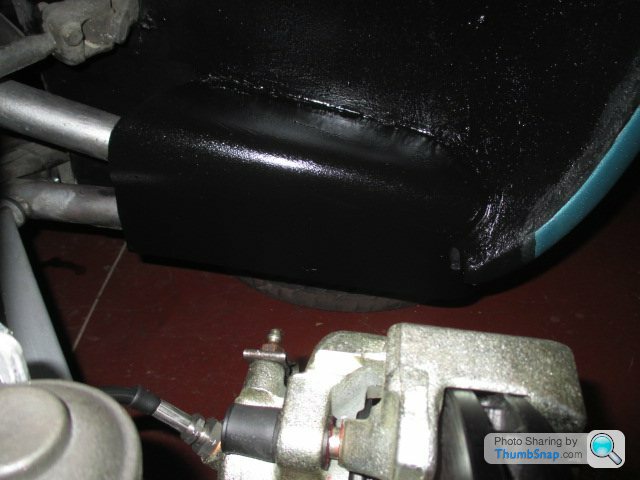
A really nice job
https://www.pistonheads.com/gassing/topic.asp?h=0&...


A really nice job

Gassing Station | Chimaera | Top of Page | What's New | My Stuff





